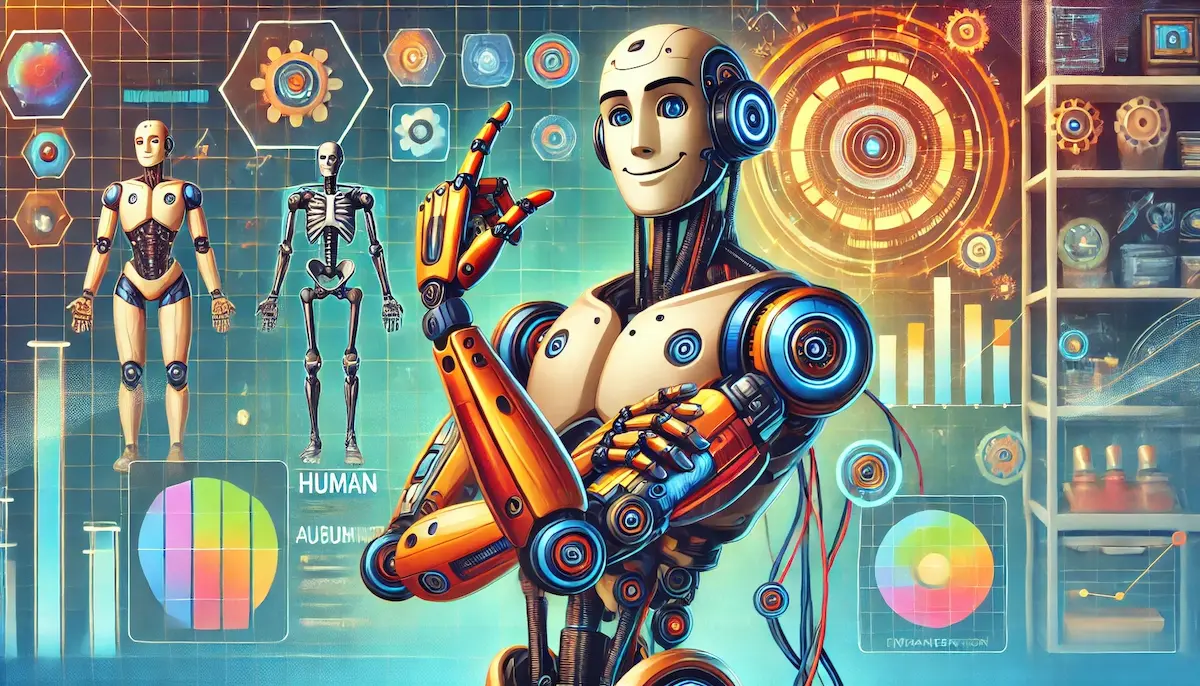Human augmentation is an emerging field that explores the enhancement of human capabilities through technology. This multidisciplinary area combines elements of biotechnology, robotics, artificial intelligence, and wearable technology to improve physical and cognitive abilities. This article will delve into the key aspects of human augmentation, its significance, and its diverse applications across various fields.
What is Human Augmentation?
Human augmentation refers to the use of technology to enhance human physical and mental abilities. This can include anything from wearable devices that improve sensory perception to implantable technologies that enhance physical strength or cognitive function. The goal of human augmentation is to extend human capabilities beyond natural limits, providing individuals with enhanced performance, better health outcomes, and improved quality of life.
Importance of Human Augmentation
Enhances Physical Abilities
Human augmentation technologies can significantly enhance physical abilities. Exoskeletons, for example, can help individuals lift heavy objects with ease or assist those with mobility impairments. Wearable devices can enhance sensory perception, such as improving vision or hearing.
Improves Cognitive Function
Cognitive augmentation aims to enhance mental capabilities such as memory, attention, and problem-solving skills. Technologies like brain-computer interfaces (BCIs) allow direct communication between the brain and external devices, potentially aiding in cognitive tasks and providing new ways to interact with computers and other digital systems.
Advances Healthcare
Human augmentation has significant implications for healthcare. Implantable devices can monitor and regulate bodily functions, aiding in the treatment of chronic diseases. Prosthetics and orthotics, enhanced by robotics and AI, can restore lost functions and improve the quality of life for individuals with disabilities.
Boosts Productivity and Efficiency
In the workplace, human augmentation can boost productivity and efficiency. Wearable devices and augmented reality (AR) systems can provide real-time information and guidance, helping workers perform tasks more accurately and efficiently. Exoskeletons can reduce physical strain and injury, particularly in physically demanding jobs.
Applications of Human Augmentation
Healthcare and Rehabilitation
In healthcare, human augmentation technologies are used for rehabilitation and treatment. Advanced prosthetics, powered by robotics and AI, can mimic natural limb movements. BCIs can help individuals with paralysis communicate and control devices. Wearable health monitors track vital signs and provide real-time data to healthcare providers.
Industrial and Military
In industrial settings, exoskeletons are used to assist workers in lifting heavy objects and reducing fatigue. AR systems provide real-time information overlays, aiding in complex assembly and maintenance tasks. In the military, human augmentation technologies enhance soldiers’ physical and cognitive abilities, improving performance and safety in challenging environments.
Education and Training
Human augmentation technologies are transforming education and training. AR and virtual reality (VR) systems create immersive learning environments, allowing students to interact with complex simulations. Cognitive augmentation tools, such as memory aids and attention enhancers, support learning and retention.
Consumer Applications
In the consumer sector, wearable devices like smart glasses and fitness trackers enhance daily life. These devices provide real-time data, improve fitness and health tracking, and offer augmented reality experiences. Voice assistants and other AI-powered tools enhance cognitive tasks, making everyday activities more efficient and enjoyable.
Steps to Implement Human Augmentation
1. Identify Needs and Objectives
The first step in implementing human augmentation technologies is to identify the specific needs and objectives. This involves understanding the areas where enhancement is desired, such as physical strength, cognitive function, or sensory perception, and defining clear goals for the augmentation.
2. Choose the Appropriate Technology
Selecting the right technology is crucial for successful human augmentation. This can include wearable devices, implantable technologies, exoskeletons, or brain-computer interfaces. The choice of technology depends on the intended application, user needs, and available resources.
3. Ensure Safety and Ethics
Human augmentation raises important safety and ethical considerations. It is essential to ensure that the technologies used are safe, reliable, and do not pose risks to users. Ethical concerns, such as privacy, consent, and potential misuse, must be carefully addressed.
4. Implement and Integrate
The implementation and integration of human augmentation technologies involve deploying the chosen devices or systems and integrating them into daily activities or workflows. This may require training and support to ensure users can effectively utilize the technologies.
5. Monitor and Evaluate
Continuous monitoring and evaluation are necessary to assess the effectiveness and impact of human augmentation technologies. Regular feedback from users, along with performance metrics, helps identify areas for improvement and ensure that the augmentation meets the desired objectives.
Conclusion
Human augmentation is a rapidly evolving field with the potential to significantly enhance human capabilities and improve quality of life. By leveraging advanced technologies, we can extend our physical and cognitive abilities, advance healthcare, and boost productivity. Implementing human augmentation requires careful consideration of needs, technology selection, safety, ethics, and ongoing evaluation. Embracing this transformative technology opens new possibilities for human potential and innovation. Blockfine thanks you for reading and hopes you found this article helpful.
